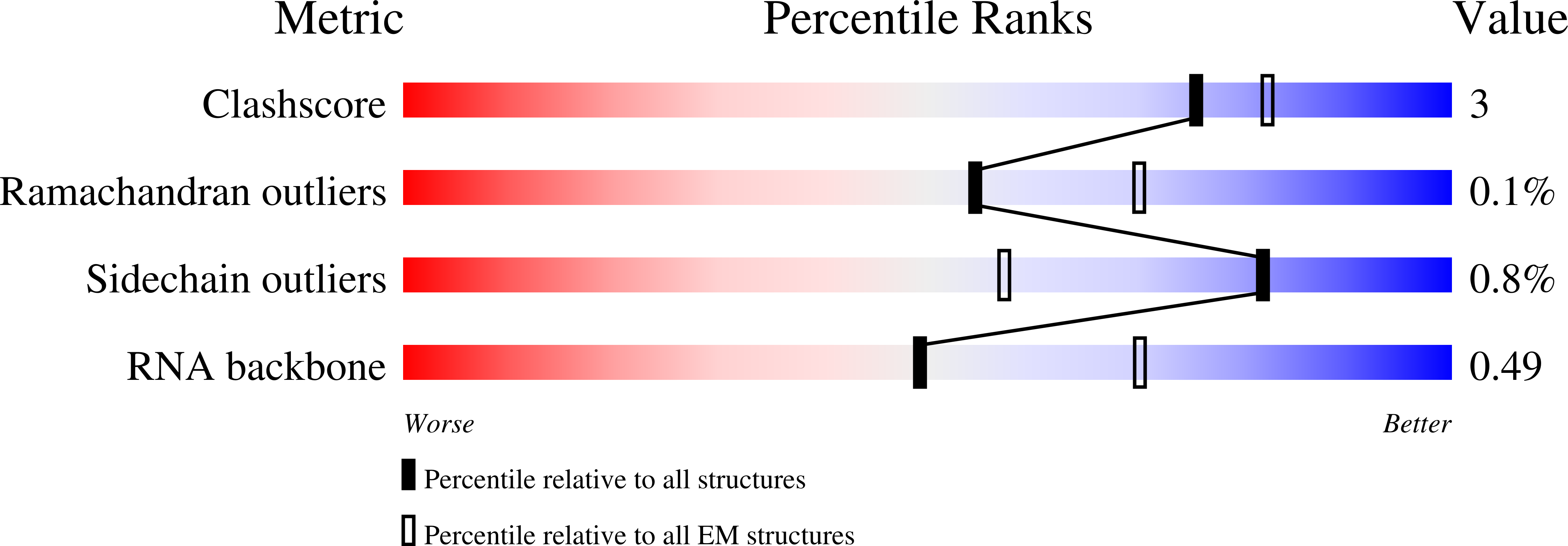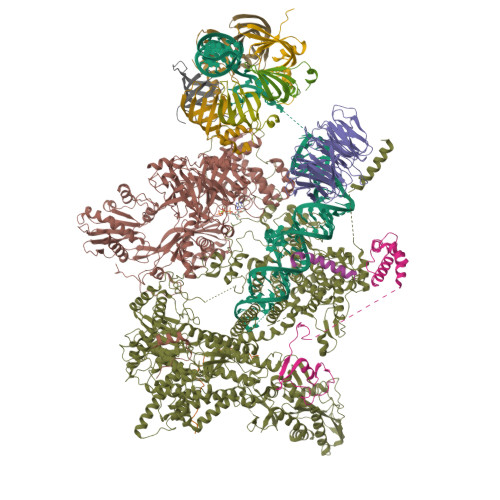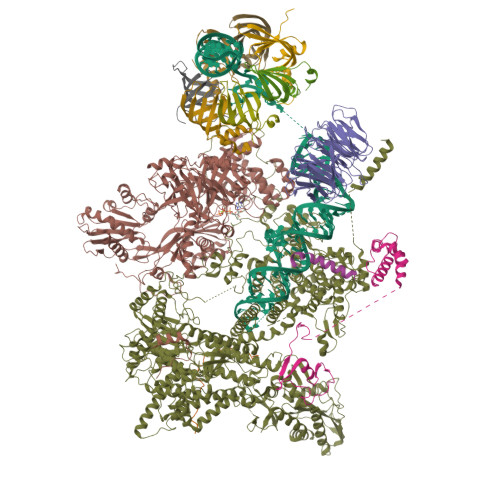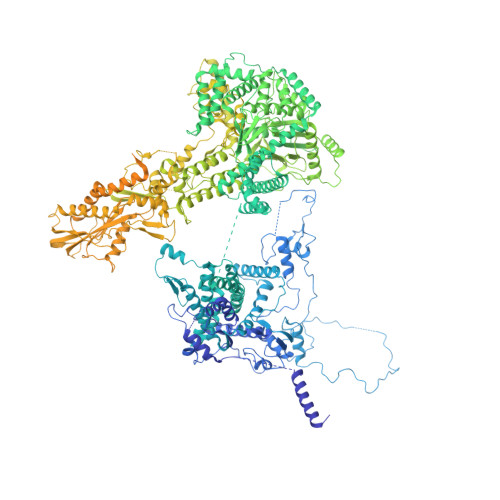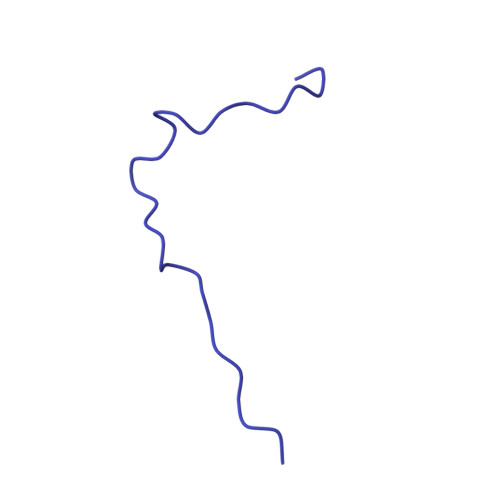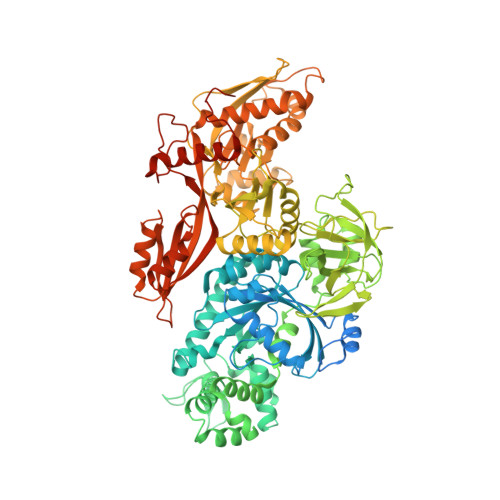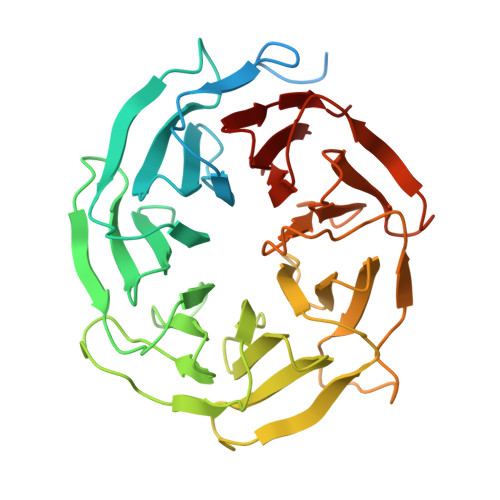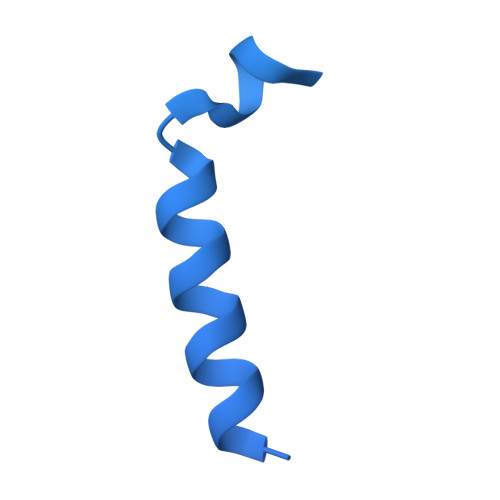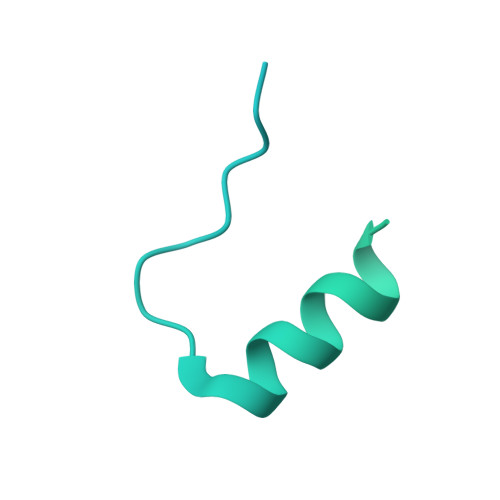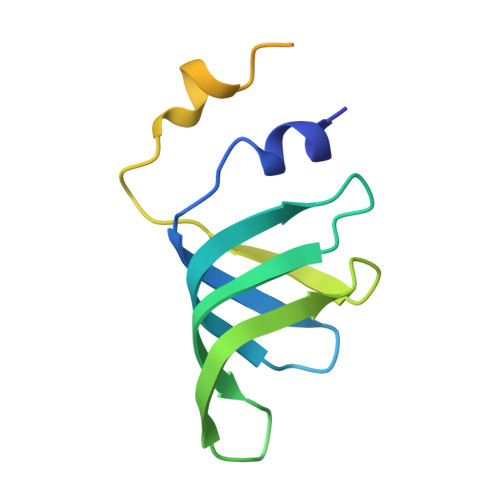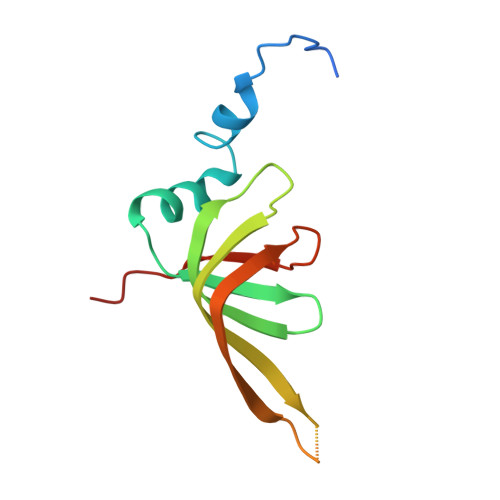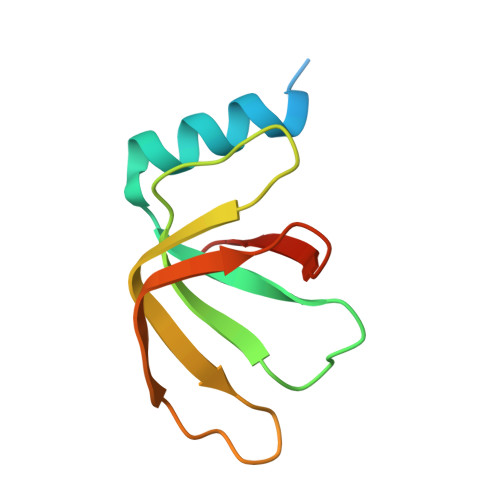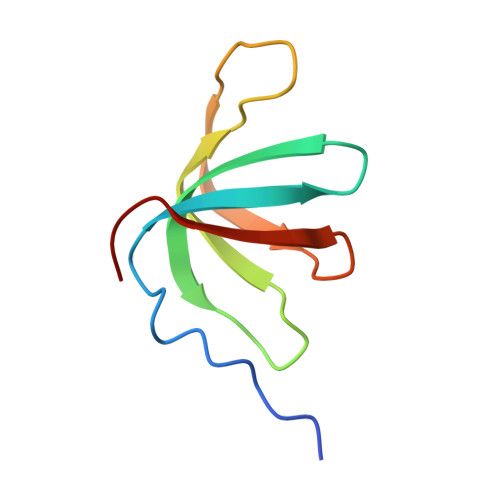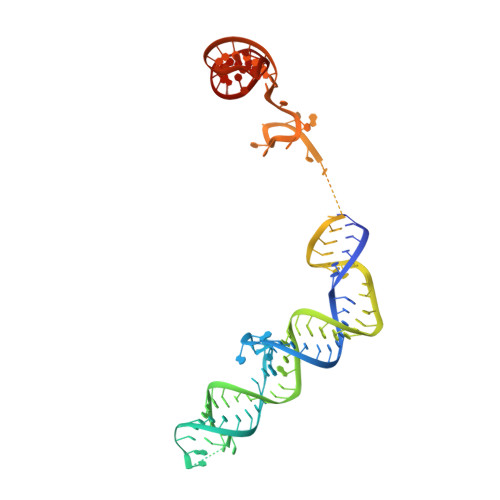Structural basis of human U5 snRNP late biogenesis and recycling.
Riabov Bassat, D., Visanpattanasin, S., Vorlander, M.K., Fin, L., Phillips, A.W., Plaschka, C.(2024) Nat Struct Mol Biol 31: 747-751
- PubMed: 38467876
- DOI: https://doi.org/10.1038/s41594-024-01243-4
- Primary Citation of Related Structures:
8Q7Q, 8Q7V, 8Q7W, 8Q7X - PubMed Abstract:
Pre-mRNA splicing by the spliceosome requires the biogenesis and recycling of its small nuclear ribonucleoprotein (snRNP) complexes, which are consumed in each round of splicing. The human U5 snRNP is the ~1 MDa 'heart' of the spliceosome and is recycled through an unknown mechanism involving major architectural rearrangements and the dedicated chaperones CD2BP2 and TSSC4. Late steps in U5 snRNP biogenesis similarly involve these chaperones. Here we report cryo-electron microscopy structures of four human U5 snRNP-CD2BP2-TSSC4 complexes, revealing how a series of molecular events primes the U5 snRNP to generate the ~2 MDa U4/U6.U5 tri-snRNP, the largest building block of the spliceosome.
Organizational Affiliation:
Research Institute of Molecular Pathology, Vienna BioCenter, Vienna, Austria.







